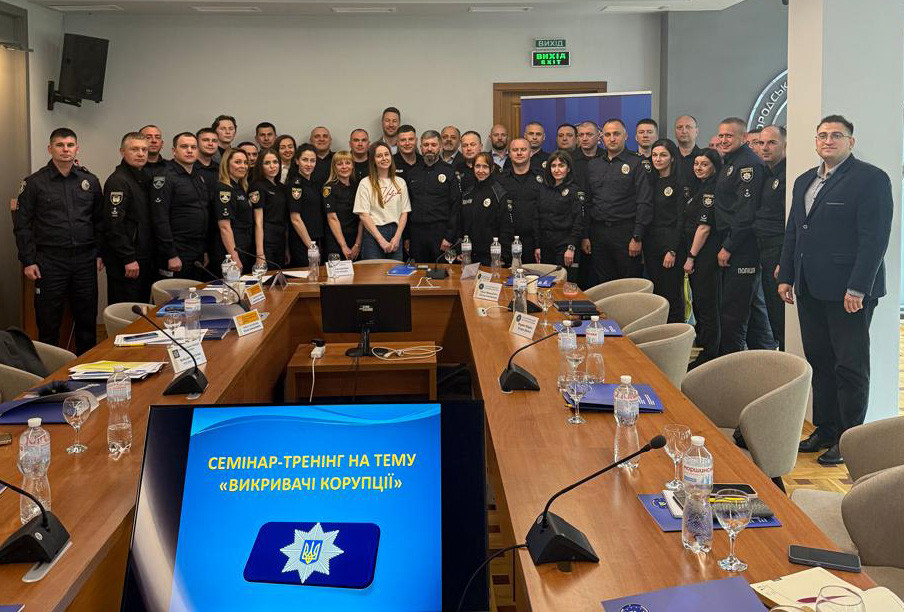Destroyed cultural heritage of Ukraine

Between February 24, 2022 and December 25, 2023, 872 objects of cultural heritage of Ukraine were destroyed or damaged. Of these, there are 120 monuments of national importance, 682 of local significance, and 70 recently discovered.
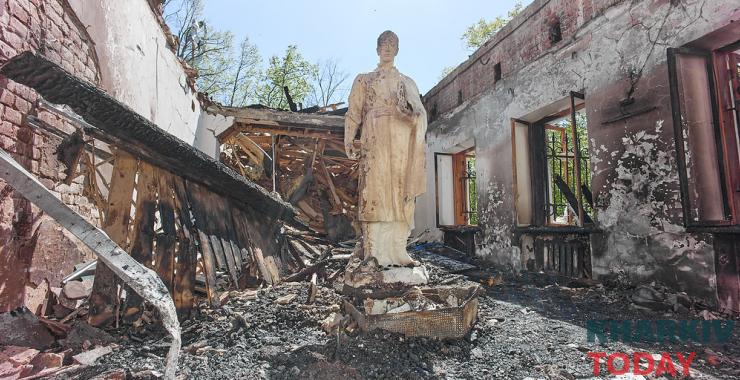
According to the OVA, since the beginning of the full-scale invasion there were:
- 23 monuments were completely destroyed;
- 672 monuments are partially damaged;
- Also, the extent of damage to 177 objects remains unknown.
Cultural heritage sites have been damaged or destroyed in 17 areas:
➤ Kharkiv region — 216 damaged or destroyed cultural heritage sites. Including 10 of national importance, 202 of local importance, four newly discovered cultural heritage objects.
➤ Odessa region — 119. Including 28 of national importance, 91 of local importance.
➤ Donetsk region — 111. Including 12 of national importance, 99 of local importance.
➤ Kherson region — 86. Including 12 national significance, 44 local significance, 30 newly discovered cultural heritage sites.
➤ Chernihiv region — 70. Including 27 of national importance, 37 of local importance, 6 newly discovered cultural heritage objects.
➤ Kiev region — 69. Including 16 monuments of national importance, 37 monuments of local importance and 16 newly discovered objects.
➤ Zaporizhzhya region — 38 sights of local importance.
➤ Lviv region — 33. Including 2 of national importance, 31 of local importance.
➤ Dnipropetrovsk region — 32. Including 1 of national importance, 25 of local importance, 6 newly discovered cultural heritage objects.
➤ Luhansk region — 30 sights of local importance.
➤ Sumy region — 25. Including 5 of national importance, 20 of local importance.
➤ Mykolaiv region — 22. Including 3 of national importance, 15 of local importance, 4 newly discovered cultural heritage objects.
➤ Khmelnytsky region — 10. Including 1 of national importance, 5 of local significance, 3 newly discovered cultural heritage objects.
➤ Vinnytsia region — 4. Including 1 of national importance, 3 of local importance.
➤ Poltava region — 4. Including 1 of national importance, 2 of local significance, 1 newly discovered cultural heritage object.
➤ Zhytomyr region — 2. Including 1 of national importance, 1 of local importance.
➤ Kirovohrad region — 1 of local importance.
With the beginning of the full-scale invasion, some museums, in particular with the assistance of the National Police, moved exhibits to locations whose locations were not disclosed. Thus, three museums in Odessa in January began to prepare for the evacuation of exhibits to the west of Ukraine under the guise of sending them to exhibitions. Special “red lists” of exhibits of Ukrainian museums were prepared for evacuation in case of attack.
In early March, the director of the National Museum of History of Ukraine in Kyiv, Fyodor Androshchuk, reported that four museums in Vinnitsa, Zhytomyr, Sumy and Chernihiv have been removed from the exposition and protected the main exhibits, and the museum in Vinnitsa is partly used as housing for displaced persons.
Details of the campaign to protect Ukraine's cultural heritage have not been revealed, but it has spanned museums, archives, galleries, libraries and other organizations across the country and, according to Bloomberg, was one of the largest in the current century, reminiscent of a similar campaign in Europe during World War II.
The central executive bodies of the Ministry of Internal Affairs took part in the protection of cultural objects and historical values. The veil was slightly opened by the current Minister of Internal Affairs of Ukraine, and at the beginning of the full-scale invasion, the Head of the National Police of Ukraine Igor Klymenko in a film dedicated to the memory of the previous head of the department Denis Monastyrsky, who in January 2023 tragically died in a plane crash along with his first Deputy and State Secretary of the Ministry of Internal Affairs:
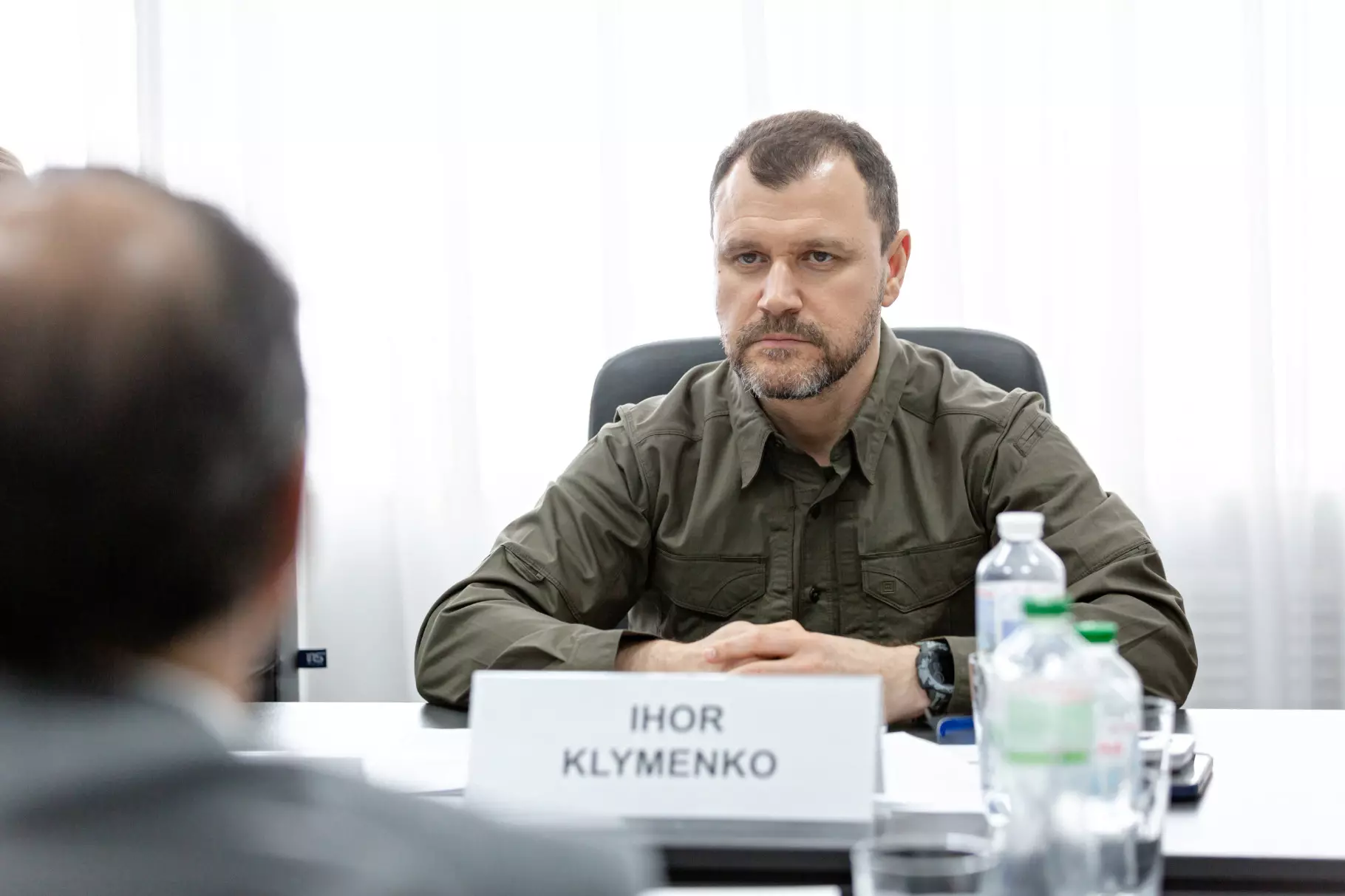
“Denis Monastyrsky together with the Minister of Culture decided to export cultural and historical values to other points where they are now. I will not say whether it is our country or it is abroad. But we [we are talking about employees of the National Police, which was then headed by Igor Klymenko, the current head of the Ministry of Internal Affairs] took out and accompanied these valuables around the clock. Now we are talking about hundreds of thousands of museum items. The country will still remember after the war that we did everything for our people and children to preserve our historical memory and identity.”
Non-governmental associations with the support of international organizations also joined the rescue of cultural and historical rarities.
Thus, the Ivano-Frankivsk collective of artists “Assortment Room” equipped several shelters and during the first 10 days of the war evacuated more than 20 collections of works of art there. Evacuation requests came to the team from galleries in Kiev, Mariupol, Odessa, Zaporizhia and other cities.
Olga Gonchar, director of the Lviv Museum “Territory of Terror”, organized the crisis fund “Emergency Museum Aid”, supported by the European Commission and the MiToST association. As of early March 2022, it has provided support to almost 20 museums from 4 areas, primarily from small towns and villages in the south and east of the country.
Many immovable monuments in different cities were protected by covering them with sandbags, boards or wrapped in plastic. In Kyiv, as of mid-April, about 28 facilities were protected by entrepreneurs, the public and volunteers. For these purposes, business representatives provided the city with formwork boards for 1 million hryvnias, about 15 machines of sand and 20 thousand bags.
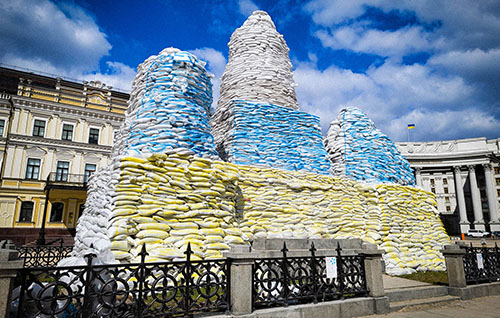
In Lviv, some of the historical heritage objects were dismantled and moved into shelters, while monuments, statues, fountains and church stained glass windows that could not be dismantled were protected with wooden structures and wrapping in plastic or other materials. The protection of Lviv's monuments is helped a lot by European organizations. Thus, two wagons of protective materials were sent to the city from Poland.

Shortly after the Russian invasion of Ukraine, UNESCO announced that it was working to designate the country's key historical sites with the emblem of the 1954 Hague Convention, an internationally recognized symbol of the protection of cultural heritage during armed conflict.

The organization also works with the directors of Ukrainian museums to coordinate efforts to preserve the collections. It is also planned to monitor damage to cultural objects using satellite photography.
The Embassy of Ukraine to the Holy See and the Supreme Ukrainian Catholic Archdiocese urged Russia not to bomb St. Sophia Cathedral.
Volunteers created the international project “Save Ukrainian Cultural Heritage Online” (SUCHO), which aims to archive online cultural values — the content of various sites dedicated to culture. As of April 8, 2022, 25 terabytes of data had already been archived.
The project was supported by technology companies and Internet providers. It was attended by more than 1,000 librarians, archivists and researchers. The Ukrainian Scientific Institute of Harvard University and the University of Alberta joined its implementation.
On April 1, 2022, UNESCO reported that at least 53 cultural sites were completely or partially destroyed by the war, including 29 churches, 16 historical buildings, 4 museums and 4 monuments (the list did not claim completeness).
As of July 26, 2023, UNESCO confirmed the destruction or damage of 281 objects of cultural heritage of Ukraine: 118 religious buildings, 103 historical buildings and cultural institutions, 19 monuments, 27 museums, 13 libraries and one archive.
UNESCO World Heritage Sites, as far as we know, were not damaged, but the shelling damaged buildings in the buffer zones of the historical centers of Lviv and Odessa.
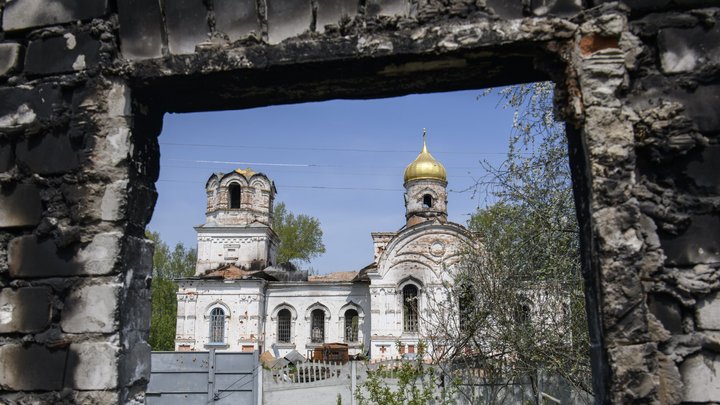
The Ministry of Culture points out that due to the occupation of parts of Luhansk, Kherson, Zaporizhia and Donetsk regions, as well as the Autonomous Republic of Crimea, it is impossible to account for the exact number of cultural infrastructure objects that were damaged during hostilities and occupation.
One can only imagine what happened to them. They could be taken deep into the Russian Federation or fall into the hands of fraudsters, and then into private collections, one of which, for example, was discovered by investigators of the National Police and the SBI in the heart of Kiev during the investigation of criminal proceedings on collaboration and support of terrorism, in particular through the financing of such of the DNR.

On June 24, 2022, this discovered collection of historical artifacts with the participation of the then Minister of Internal Affairs Denis Monastyrsky, Prosecutor General Irina Venediktova and Minister of Culture and Information Policy Oleksandr Tkachenko was transferred to the National Historical Museum of Ukraine for responsible storage.
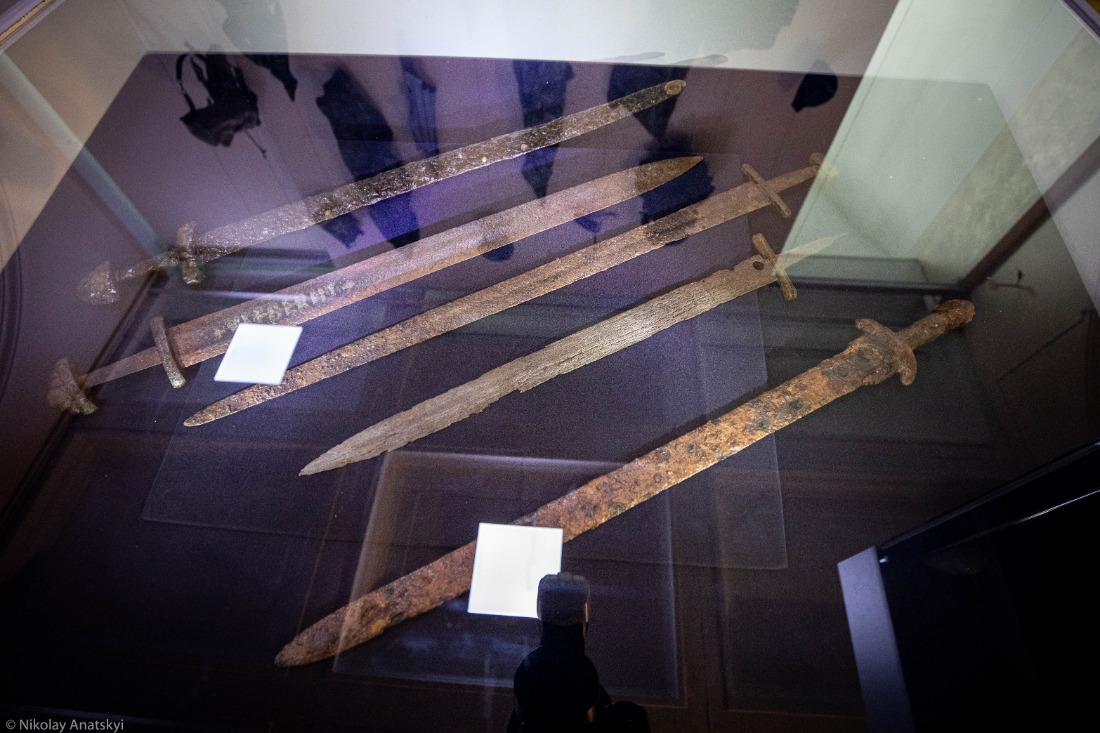
Law enforcement officers discovered the collection quite unexpectedly and by chance in one of the offices of Kiev belonging to an exploiter who headed the government of the Autonomous Republic of Crimea in the early 2000s and later owned several large agrarian companies in the south of Ukraine.

In the discovered collection more than six thousand units of historical and cultural values. Part of this collection was located in the “secret rooms” of the office premises previously prepared for storage.
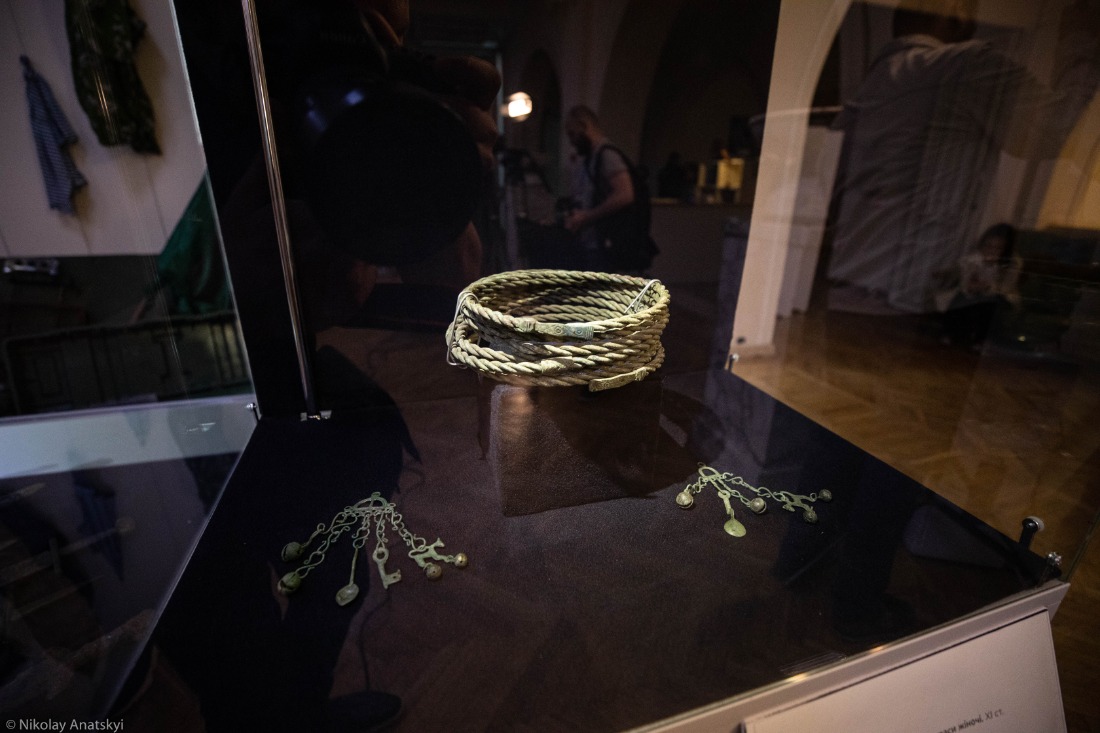
In particular, the searches found Akinak Scythian swords, spears, axes, arrows, coins, a chain chain of the XIX century, helmets of the Hellenistic era and utensils of the Trypillian culture.

According to preliminary information, these artifacts were stolen from museums in the temporarily occupied Crimea and bought from “black archaeologists”. According to very approximate estimates, the collection is worth at least several million dollars.
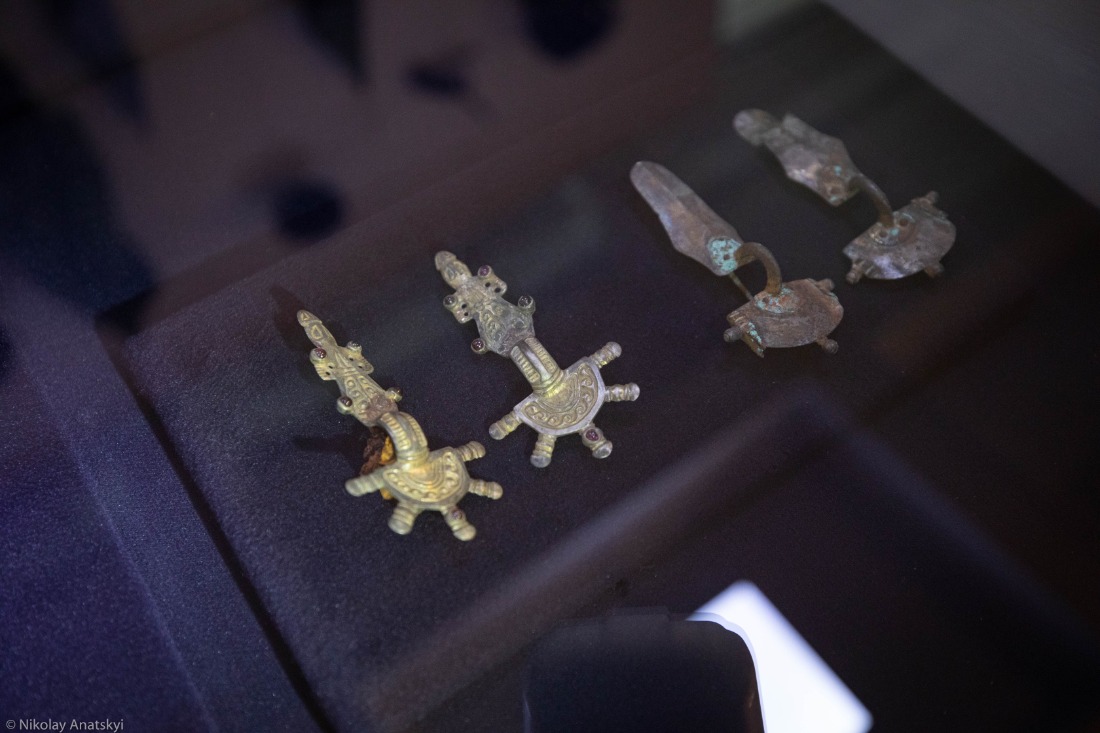
“It is a large collection that contains antique weapons and weapons, jewelry and clothing details, ceramic, metal and glassware. All of them belong to different archaeological cultures and cover the territory of the whole of Ukraine. Among the recovered items, a Byzantine sword of the IX century was discovered, about which experts knew only that it was found on the territory of the Vinnytsia region. In Europe, archaeologists knew three swords of this type... In addition, one of the seized items is an ancient print and belongs to the library fund of Ukraine,” the then Minister of Culture Oleksandr Tkachenko shared details.

➤ Destroyed and damaged museums
Russian occupiers began to destroy Ukrainian cultural values from the first days of the invasion. On February 25, 2022, the Ivankov Historical and Local Lore Museum in the north of the Kiev region burned to the ground by Russian rocket fire. The museum houses the works of the world-famous folk artist Maria Primachenko. Some of Primachenko's paintings and other exhibits were rescued by local residents from the burning building.
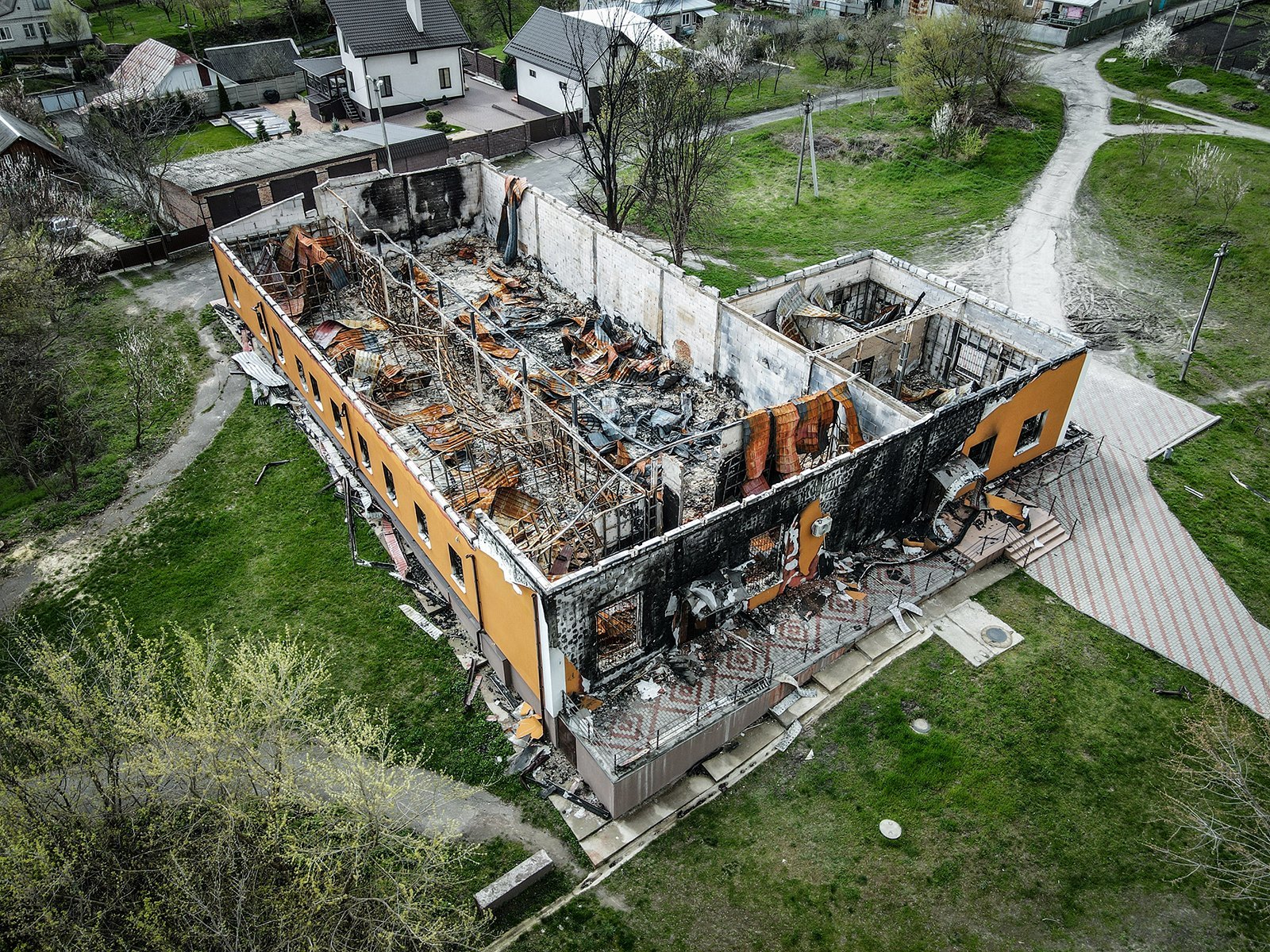
On March 1, a Russian missile strike damaged the museum of the Holocaust Memorial Center “Babin Yar”.
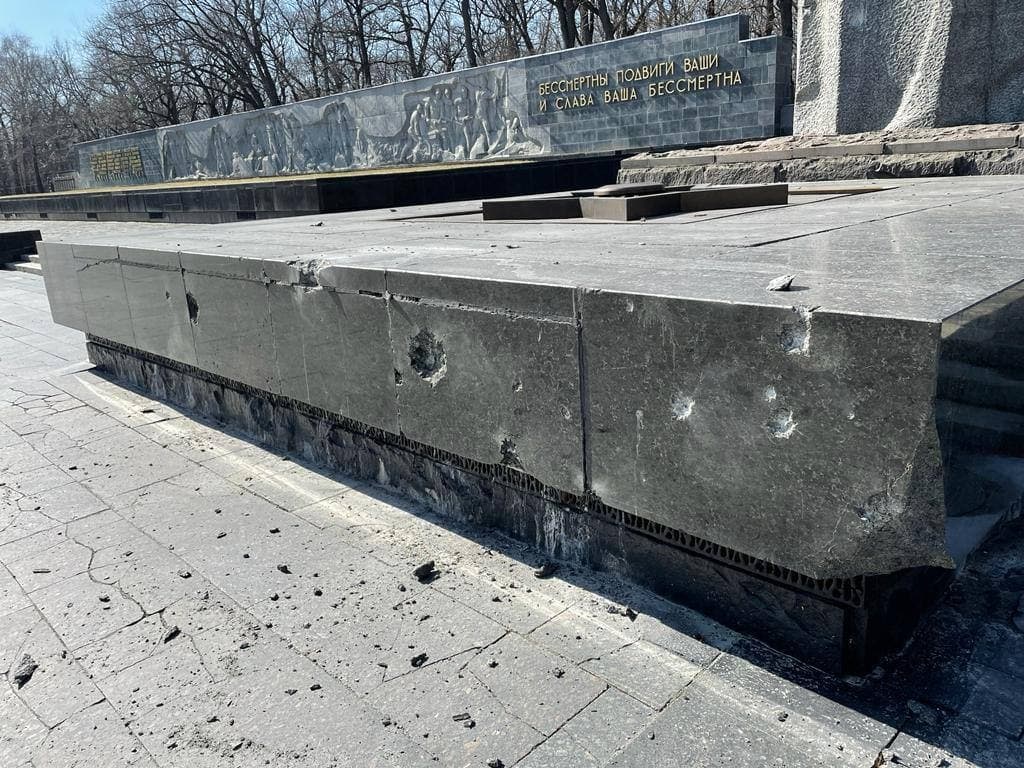
On March 2, a bomb attack partially destroyed the local history museum in Borodyanka. Many exhibits were damaged, but a large part survived.
On March 6, Mikhail Kotsiubynsky Museum-Reserve in Chernihiv was shelled and damaged. On the same day, the Grigoriy Galagan Regional Art Museum of Chernihiv received surface damage.
On March 7, Russian troops shelled the historical and architectural museum-reserve “Popova Manor” in Zaporizhzhya region. The stables arena building was damaged.
On March 13, the museum was attacked again. In addition, Russian soldiers looted it, stealing even an antique toilet (which at one time was stolen by the Bolsheviks).
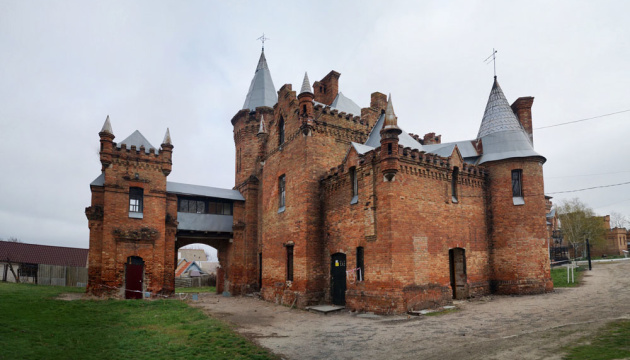
On the same day, it became known about the damage to the Kharkiv Art Museum, where the facade, stained glass windows were damaged and most of the windows were broken. The exhibits are not damaged, but they are threatened by street air.
On March 8 (partly earlier and later) the Russian military damaged the Trostyanetsky District Museum of Local Lore, the building of which is a monument of architecture of the XVIII-XIX centuries. In addition, the museum was robbed. The exhibits were not damaged, so much so they were moved to another place.

On March 9, Russian shelling partially destroyed the Okhtyrsky City Museum of Local Lore, located in an early 20th century estate.
On March 13, the facade and part of the exposition of the Military History Museum in Chernihiv were damaged.
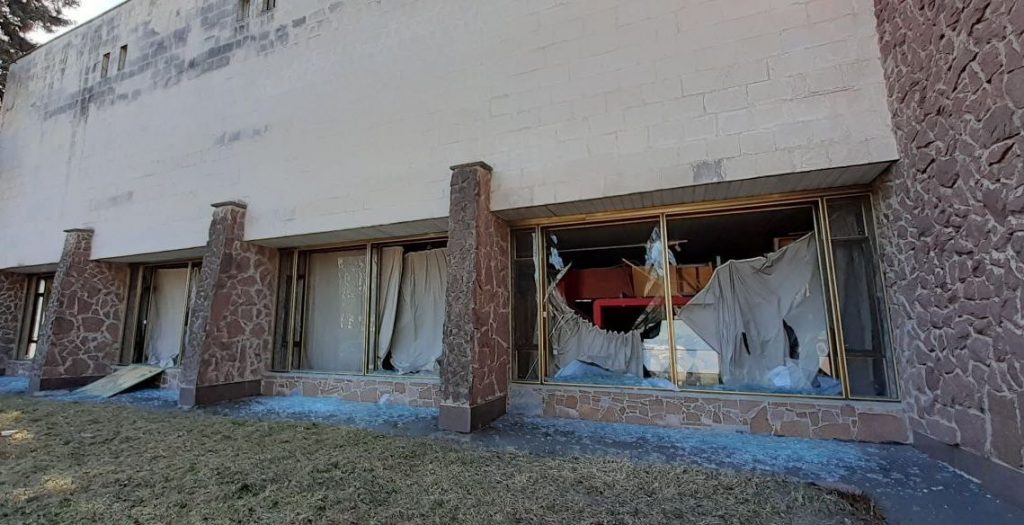
On March 14, the National Museum-Reserve “Battle for Kiev in 1943” in the Kiev region was shelled.
On March 21, Russian troops by direct hit of an air bomb destroyed the Kuinji Art Museum in Mariupol. The originals of paintings by Arkhip Kuinji were not in the museum at that time, but there were works by other artists.
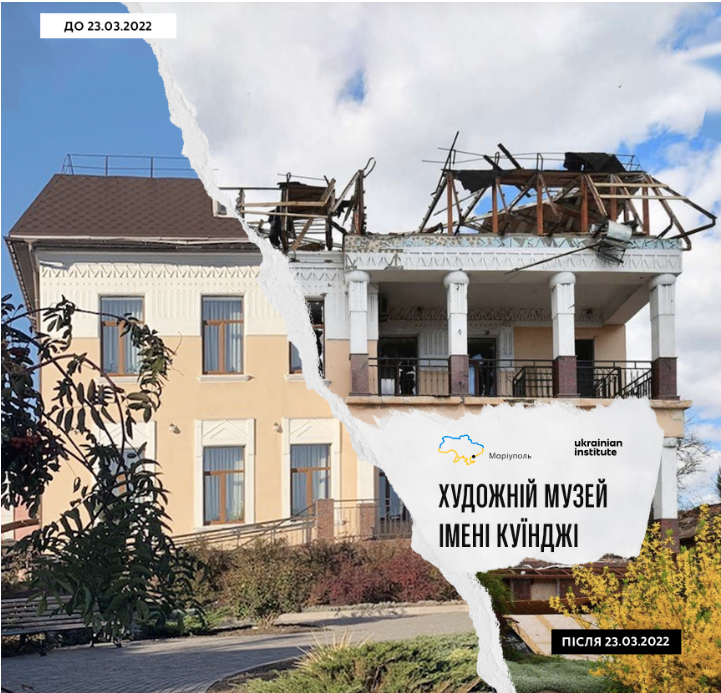
On the same day, the Museum of Retrocomputers in Mariupol, containing more than 500 samples of computer equipment from the 1950s to the early 2000s, was destroyed by Russian bombing.
On April 19, there was a report of a fire as a result of shelling in the Mariupol Museum of Local Lore. The museum was almost completely destroyed by bombing and fire. Many exhibits partially or completely burned down.

The Mariupol City Council said that Russian troops had taken more than 2,000 exhibits from three Mariupol museums (including paintings by Kuindzhi and Aivazovsky) to Donetsk.
On April 27, it became known about the theft of the Museum “Star of Worms” in Chernobyl. According to the State Emergency Service of Ukraine, the occupiers took away televisions from there and left garbage and ammunition. The exhibits were not damaged.
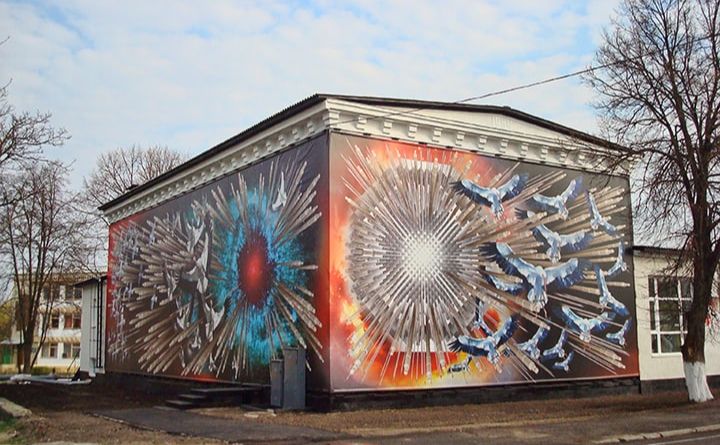
On May 6, as a result of Russian shelling, the National Museum of Literature and Memorial of G. S. Skillets in the village of Skovorodinovka, Kharkiv region. There was a wounded man.
➤ Destroyed and damaged libraries
As of June 24, 2022, at least 122 libraries had already been damaged or completely destroyed. 21 of them did not have a single document left.
In Donetsk region, as a result of shelling, the Central Public Library of the Ugledar City Community burned down. The scientific library was owned by the Mariupol Museum of Local Lore, destroyed by shelling and fire.
In the Zhytomyr region, the Zhytomyr Regional Universal Scientific Library named after Oleg Olzhych was damaged by bombing, where facades, doors and windows were damaged.
In the Kiev region, the Makarov Public Library, located in a building of the beginning of the twentieth century, is damaged. The library in the village of Pidhayne was destroyed.
In the Luhansk region, the Starobilsk Children's and Youth Library, Severodonetsk City Public Library and the Shulikovsk Village Library were damaged.
In Nikolaev on May 7, a library in a residential building in the Karabelny district was damaged by Russian shelling.
In Kharkiv, on March 2, the nearby Central Scientific Library of Karazin University, founded in 1804, was damaged by a missile strike on the Palace of Labor, in which windows were knocked out and the facade was damaged.
On March 13, the Korolenko State Scientific Library, located in the building of 1901, was damaged.
In the Kherson region, the library of the village of Oleksandrivka was destroyed and the library of the village of Stanislav was damaged.
In Chernihiv on February 28, an explosive wave from a missile strike partially destroyed the central city library named after Kotsyubinsky and the library for children named after Dovzhenko, which are located in the same building.
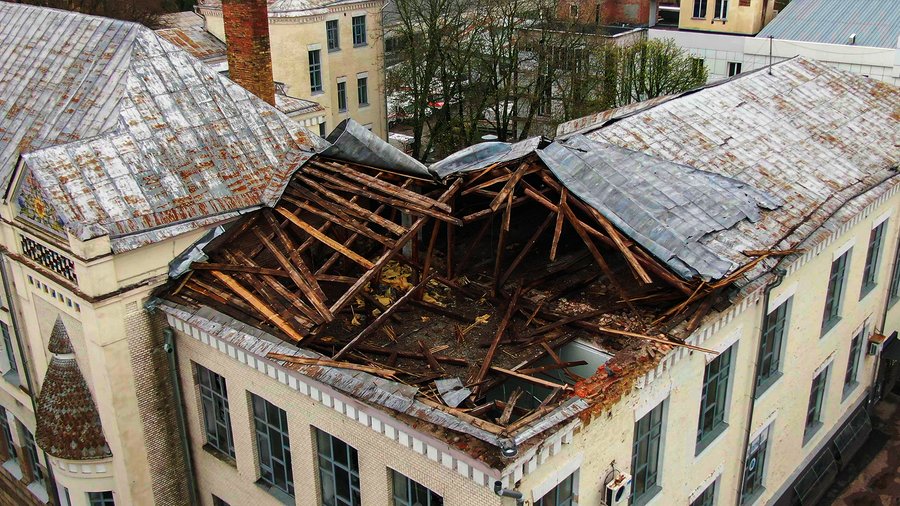
On March 11, three 500-kilogram bombs destroyed the historic house of Vasily Tarnovsky, where the Chernihiv Regional Library for Youth was located. On March 30, shelling damaged the building of the Noble Land Bank, which contains the Chernihiv Regional Scientific Library named after Korolen Ka.
➤ Destroyed religious objects
Church of the Nativity of the Virgin in Vyazivka, Zhytomyr region after Russian shelling.
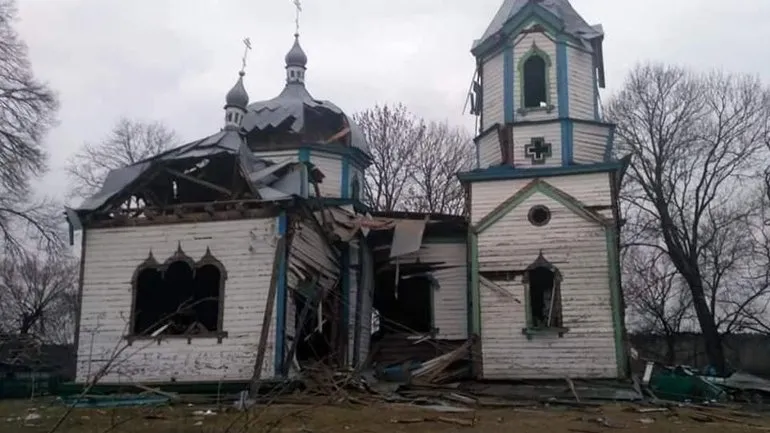
St. George's Church of St. George of the Svyatogorsk Lavra after shelling in May 2022 — Donetsk region.
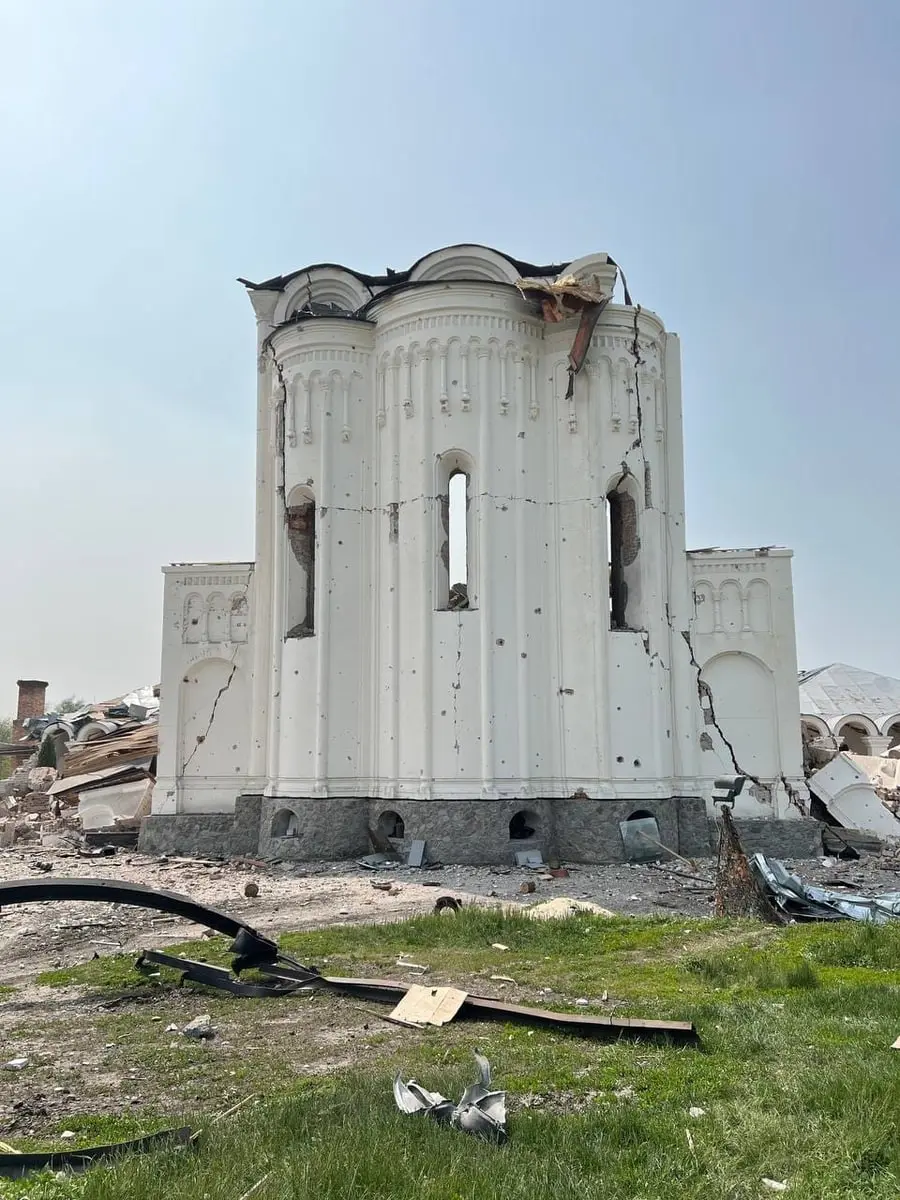
After a month of war, on March 25, the State Service of Ukraine for Ethnopolitics and Freedom of Conscience counted at least 59 damaged religious sites in at least 8 regions (an average of two objects per day of the war). These are mostly Orthodox churches.
As of September 4, 2022, 169 religious buildings were already known to have been damaged or destroyed, 54 of which are monuments of history, architecture and urban planning or belong to valuable historical buildings.
Among other things, Russian troops destroyed three wooden churches of the 19th century: Church of the Nativity of the Virgin (village Vyazivka, Zhytomyr region, March 7), St. George's Church (village Zavorichi, Kyiv region, March 7) and Church of the Ascension of the Lord (village Lukyanovka, Kyiv region, 25 March).
In the Donetsk region, the Svyatogorsk Lavra of the UOC MP suffered numerous damages. Thus, a Russian airstrike on March 12 damaged its residential buildings and wounded several people sheltering there.
On May 4, the Russian army shelled the Svyatogorsk Lavra again, wounding 7 people.
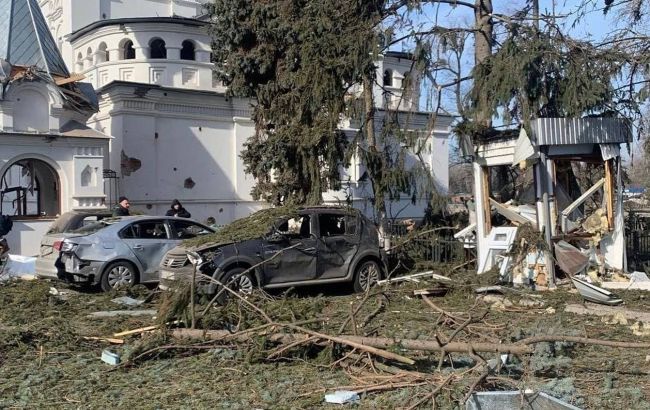
On May 7, a new shelling destroyed the Church of St. George in the village of Dolyna, on May 17 — the Church of the Virgin in the village of Bogorodichne, on June 4 — the Church of the All Saints Church in the village of Tetianivka. Other structures of the Lavra were also damaged.
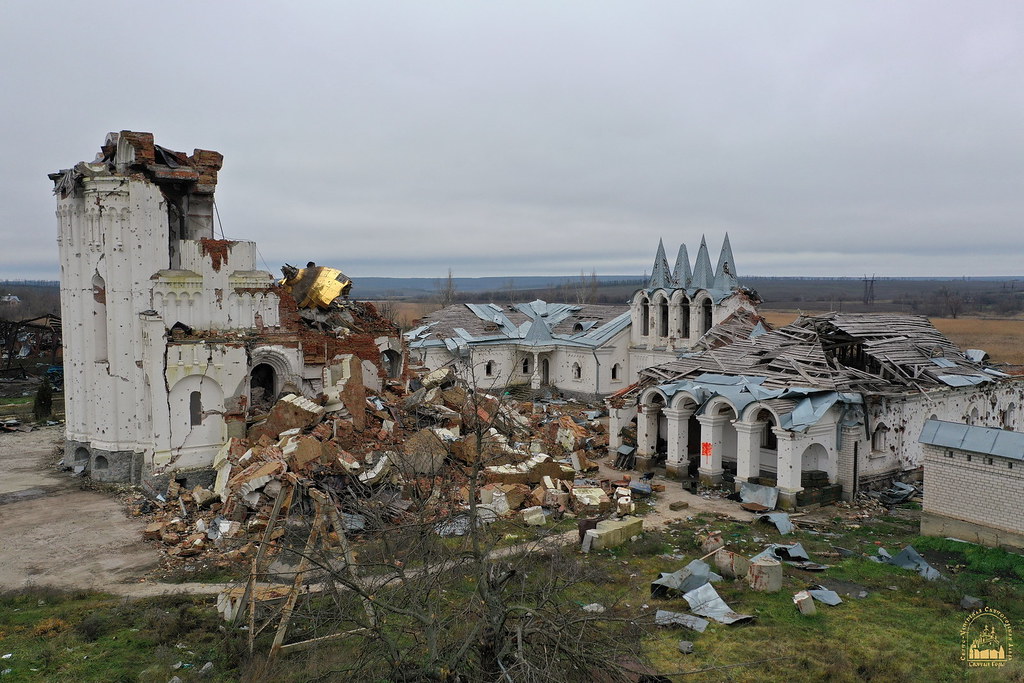
On March 12, bombings and shelling damaged the Nikolaev church of the OCU in the city of Volnovakha, Donetsk region. On March 15, Russian troops destroyed the building of the administration of the Donetsk Diocese of the OCU, located in Mariupol.
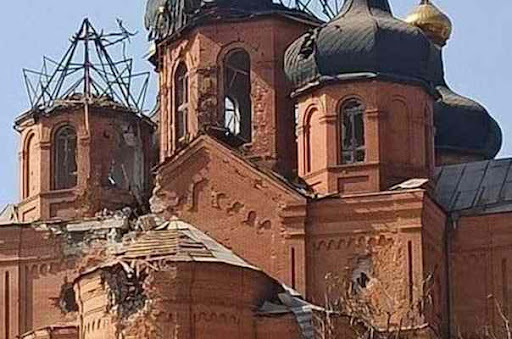
In the Kiev region, on March 10, the temple of the Prophet Elijah and the Apostle Andrew the First-Called in the village of Mostyshche was destroyed. On the same day, the Holy Christ-Christmas Cathedral in Severodonetsk, Luhansk region, was partially destroyed.
In Kharkiv on March 1, Russian troops shelled the building of the curia of the Kharkiv-Zaporizhzhya diocese of the Roman Catholic Church. The next day, shelling damaged three Orthodox churches: the Cathedral of the Assumption, the Antonius Church and the Church of John the Peaceful.

On March 6, the Baptist house of prayer in Izyum, Kharkiv region was partially destroyed. On March 10, the Kharkiv Choral Synagogue was damaged, on March 11 - the church of St. Yuri the Victorious of the OCU, on the night of March 12 - the temple of Queen Tamara of the UOC MP in Pyatikhatky, March 14 — Transfiguration Church of the UOC-MP on Saltovka, March 15 — yeshiva of the local Jewish community, March 17 — Temple of the Smolensk Icon of the UOC MP on Kholodnaya Gora. On April 4, the Church of the Nativity of the Virgin of the UOC MP in Dergachi, Kharkiv region, was damaged.

In Chernihiv, the ensemble of the Trinity-Ilyinsky Monastery and the Yeletsky Assumption Monastery suffered damage. The church of St. Theodosius was destroyed; the Resurrection, Catherine and St. Kazan churches and the memorial with the chapel of the Archangel Michael in the cemetery of Yatsevo were damaged.

The temples of the XII-XII centuries in Chernihiv Dietka, despite its bombing, were not seriously damaged. Significantly damaged was the Church of the Ascension in Lukashivka, Chernihiv region, where the headquarters of the invaders was located.






